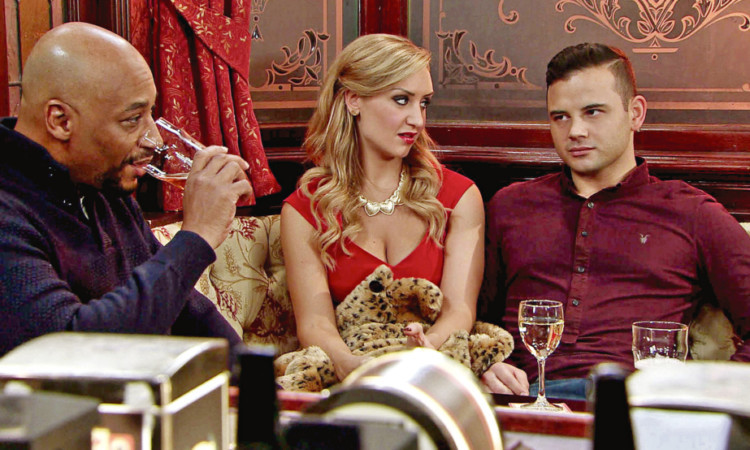
A row has broken out after an alcohol expert blamed TV soaps for “normalising” binge-drinking.
Barbara O’Donnell, of the Scottish Government-funded Alcohol Focus Scotland, claims pub scenes in the likes of EastEnders, Coronation Street and River City are contributing to the country’s alcohol problem.
She is calling on the shows’ producers to reduce the amount of filming in pubs.
She said: “Why are so many soaps and TV programmes set in pubs? It’s seen as a social norm on the shows. But they have no basis in reality.
“Times have changed and people no longer spend so much time if any in pubs at night. But you wouldn’t believe that by watching soaps.
“There’s an element of normalising drinking behaviour, and that is worrying. Soap programme makers have a responsibility to reflect a certain degree of reality.”
The campaigner, speaking at the Scotland Patients Association Conference in Glasgow, also laid into the use of booze in Hollywood movies aimed at older kids.
She said: “You just look at the recent Superman film to see how beer companies are paying to get product placement in them. It’s the same with James Bond, he’s frequently seen drinking and heavily.
“It’s advertising by the back door and who knows what impact this is having on children? There are similar concerns with the sports industry and how many alcohol firms are involved in sports sponsorship.”
But Scottish Conservative Health Spokesman, Jackson Carlaw, slammed Ms O’Donnell’s claims as “ridiculous”.
He said: “There is a serious debate about how we change Scotland’s corrosive relationship with alcohol. Alcohol Focus Scotland make themselves look ridiculous with nonsense like this.
“Making wild assertions and preposterous demands about television censorship belong in the days of Mary Whitehouse.”
In December, researchers at Nottingham University Hospitals NHS Trust read 14 of Ian Fleming’s James Bond novels and concluded that in real life he would be an alcoholic.
The boffins discovered that Bond downed 1,150 units of alcohol in 88 days.
On the spy’s biggest day of boozing in From Russia With Love he had the equivalent of 10 pints before knocking back 10 glasses of wine.
In the British Medical Journal the report authors said Bond would struggle to drive an Aston Martin or deactivate a nuclear bomb and would be just as likely to die at the hands of drink-related diseases as gunfire.

Enjoy the convenience of having The Sunday Post delivered as a digital ePaper straight to your smartphone, tablet or computer.
Subscribe for only £5.49 a month and enjoy all the benefits of the printed paper as a digital replica.
Subscribe